SpaceX CEO Elon Musk announced today (Dec. 19) that his company plans to launch an upgraded version of its Falcon 9 rocket on Sunday night, Dec. 20, from Cape Canaveral, Florida – for the first time since it failed in flight six months ago on a mission for NASA to the space station – after successfully completing a crucial test of the rockets engines late Friday night.
Furthermore, SpaceX confirmed it will conduct a historic first ever attempt to recover the commercial rocket’s first stage by a soft landing on the ground at a special SpaceX site called Landing Zone 1 on the Cape’s Air Force Station.
“Currently looking good for a Sunday night attempted orbital launch and rocket landing at Cape Canaveral,” Musk tweeted today.
The path to Sunday’s ‘Return to Flight’ launch was cleared after SpaceX successfully conducted a static hot fire test of the Falcon 9 first stages engines at the Florida space coast launch pad last night.
“Static fire test looks good,” Musk confirmed via Twitter. “Pending data review, will aim to launch Sunday.”
Sunday’s launch of the 229 foot tall Falcon 9 from Space Launch Complex 40 on Cape Canaveral Air Force Station, Fla. is slated for 8:29 p.m. ET.
The primary mission of the liftoff of the SpaceX Falcon 9 – in a newly enhanced upgraded configuration – is to carry a payload of eleven small commercial communications satellites for Orbcomm on the second OG2 mission. They are fueled and stacked on the satellite dispenser and encapsulated inside the payload fairing.
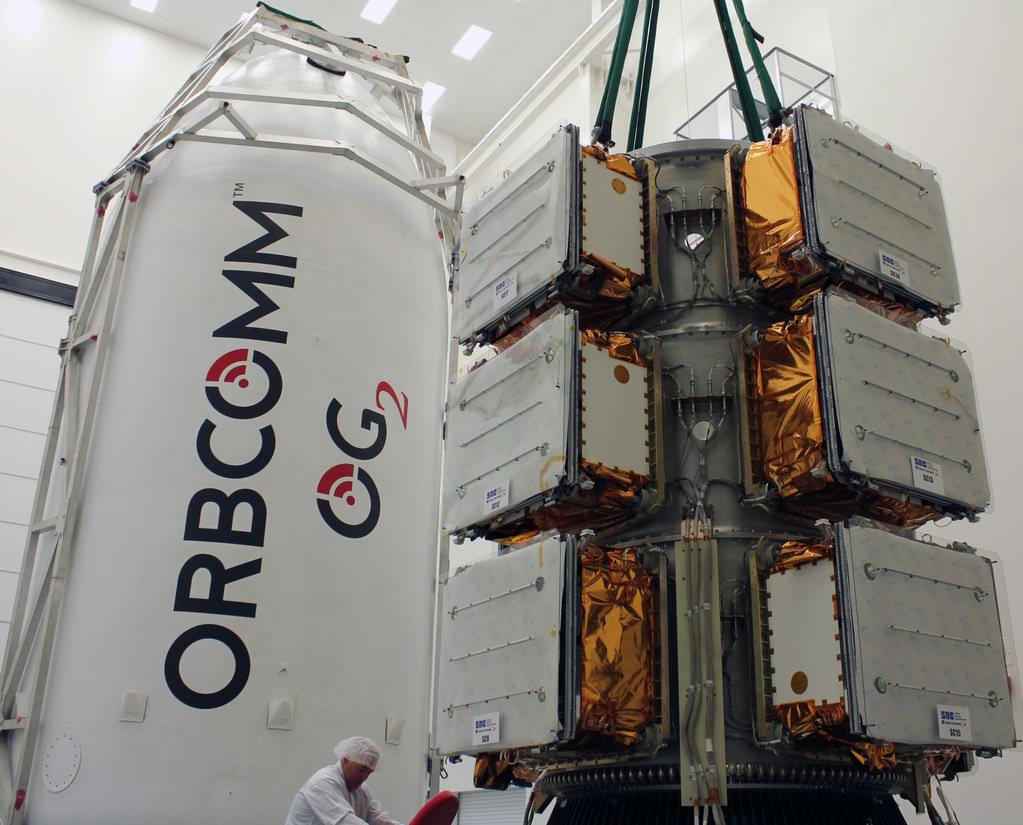
“The Falcon 9 will launch eleven next generation OG2 satellites as part of ORBCOMM’s second and final OG2 Mission at Cape Canaveral Air Force Station, Florida,” says Orbcomm.
The 380 pound (170 kg) satellites will be deployed into low Earth orbit at about 400 miles altitude and join the fleet of existing OG2 satellites. SpaceX has already notched one successful launch for Orbcomm when the first six Orbcomm OG2 satellites lifted off on July 14, 2014.
“We are excited to launch our eleven OG2 satellites aboard SpaceX’s newly upgraded Falcon 9 rocket and have full confidence in SpaceX and their dedication to this launch,” said Marc Eisenberg, ORBCOMM’s Chief Executive Officer.
“We look forward to completing the deployment of our next generation constellation and delivering a higher level of performance, coverage and reliability through our modernized and upgraded OG2 network to our customers around the world.”
A successful launch is critical to SpaceX which has a fully booked manifest of more than 50 launches waiting in line and worth billions of dollars in needed revenue to the firm.
The launch window lasts 60 seconds and opens at 8:29 p.m. ET.
A live webcast will be available at SpaceX.com/webcast beginning at approximately 8:05 p.m. ET on Sunday, Dec. 20.
If needed, SpaceX says a backup launch opportunity is available on Dec. 21.
Air Force meteorologists are predicting a 90 percent chance of favorable weather conditions at launch time.
The secondary test objective of SpaceX is to land the Falcon 9 rockets first stage on land by a propulsive soft landing for the first time in history at SpaceX’s Landing Zone 1, a few miles south of launch pad 40 at Cape Canaveral.
Two prior attempts to land on a barge came very close with pinpoint approaches to the vessel in the Atlantic Ocean. But the rocket tipped over in the final moments and was destroyed.
“Previous attempts to recover the first-stage of the Falcon 9 have been attempted out at sea using the company’s Autonomous Spaceport Drone Ships. Landing Zone 1 was previously known as Space Launch Complex 13, a former U.S. Air Force rocket and missile testing range last used in 1978, SpaceX said in a statement.
“If successful, this test would mark the first time in history an orbital rocket has successfully achieved a land landing.”
After the Falcon 9 rocket was rolled out to pad 40 on Wednesday, Dec. 16, SpaceX engineers carried out a fueling and countdown test (with liquid oxygen and RP-1 propellants) in anticipation of conducting the critical static fire test of the enhanced first stage Merlin 1D engines.
But technicians soon encountered a variety of technical issues that postponed the test completion until Friday evening. This subsequently forced a 1 day launch delay from Saturday, Dec. 19 to Sunday Dec. 20.
Among the technical issues faced were difficulties in cooling the liquid oxygen propellant to lower temperatures (-340 F) then previously done, which allows it to be denser and increase performance by loading more fuel into the same volume.
“Falcon 9 is vertical on the launch pad at Cape Canaveral. Working towards static fire. Deep cryo liquid oxygen presenting some challenges,” Musk tweeted on Dec. 17.
“-340 F in this case. Deep cryo increases density and amplifies rocket performance. First time anyone has gone this low for O2.”
The static fire test is a routine prelaunch check with a fully fueled Falcon 9 held down on the pad and conducted by SpaceX to confirm the readiness of the rocket. It simulates a a launch countdown.
The Falcon 9 first stage is outfitted with nine Merlin 1D engine in an octaweb arrangement. For this mission they have been upgraded to fire at a higher thrust level of some 170,000 pounds of sea level thrust each, generating a total of 1.5 million pounds of thrust. That compares to about 1.3 million pounds of sea level thrust for the earlier Falcon 9 v1.1 version, which will only fly once more in January 2016.
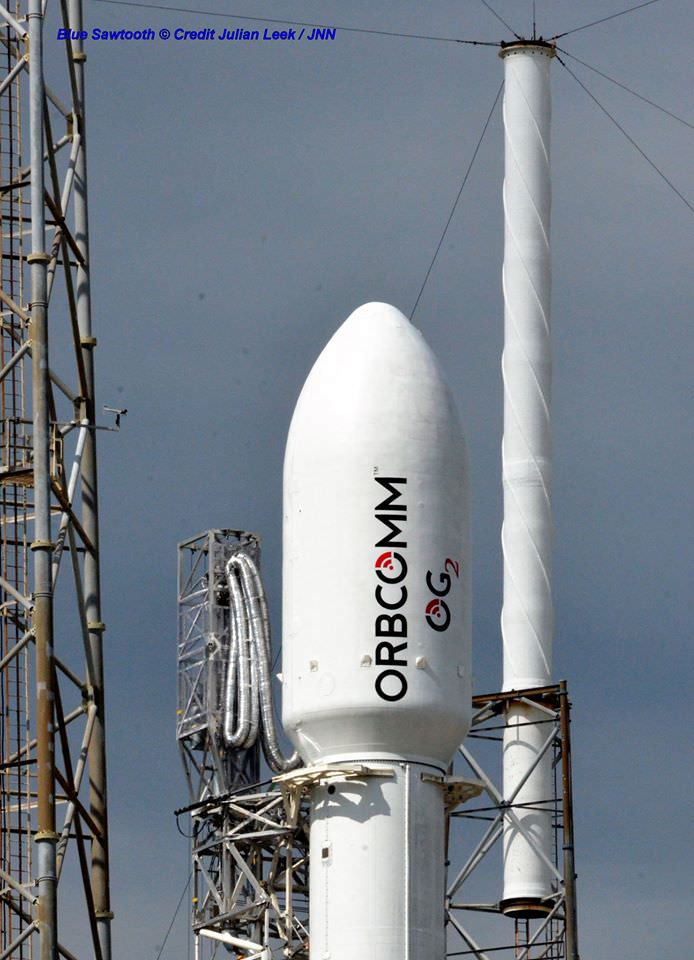
The Falcon 9 is equipped with four landing legs and four grid fins to enable the propulsive landing back on the ground at the Cape, once the first stage separates and relights a Merlin 1D engine.
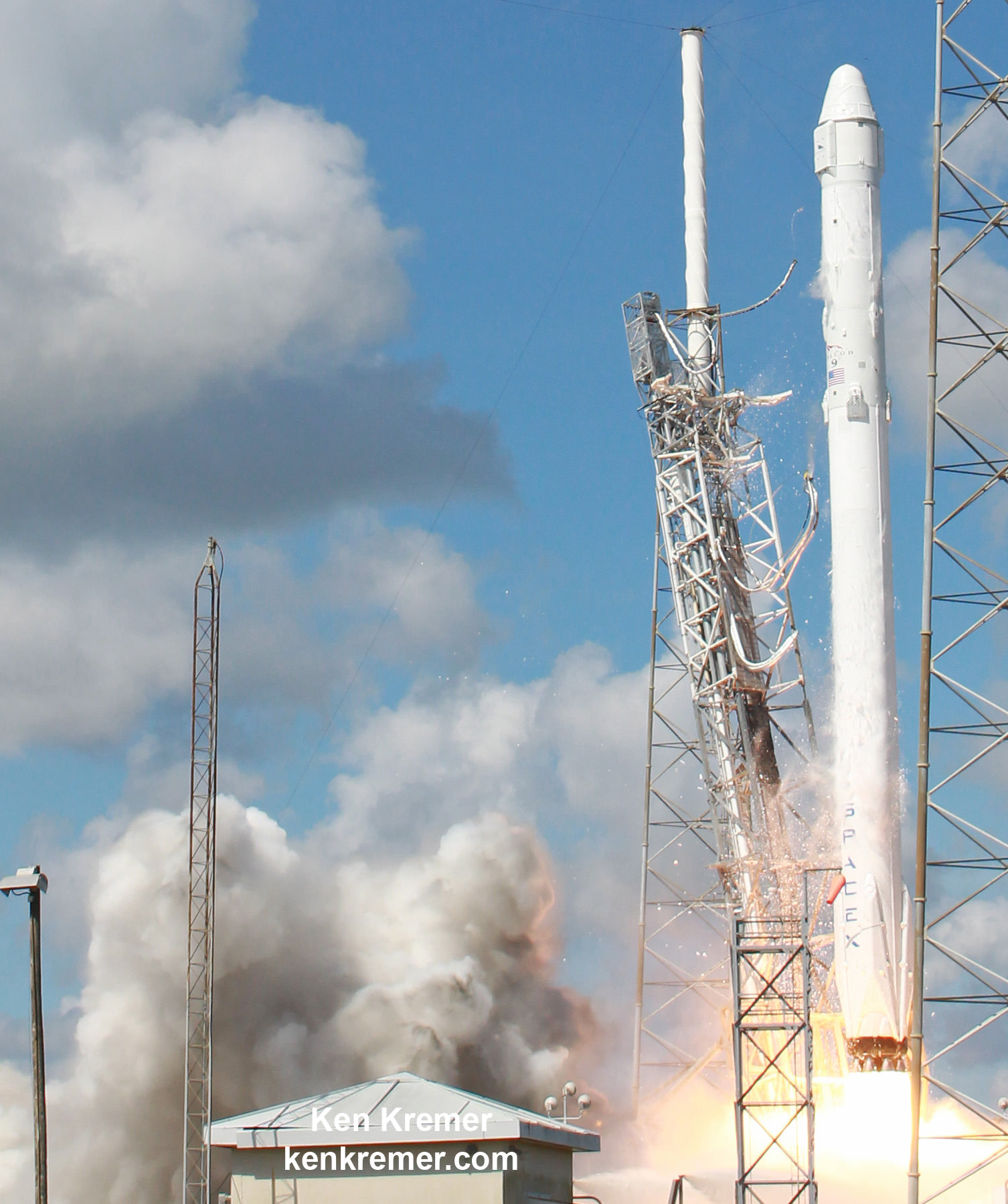
All SpaceX launches ground to an immediate halt this past summer when the commercial two stage Falcon 9 booster carrying a SpaceX cargo Dragon spacecraft heading to the ISS on a critical resupply mission for NASA was unexpectedly destroyed by an overpressure event 139 seconds after a picture perfect blastoff from Space Launch Complex 40 at Cape Canaveral Air Force Station in Florida on June 28 at 10:21 a.m. EDT.
The cause of the in-flight breakup was traced to the failure of a critical support strut inside the second stage liquid oxygen tank holding a high pressure helium tank in the Falcon 9 rocket, as the likely cause, revealed SpaceX CEO and chief designer Elon Musk during a briefing for reporters on July 20.
Musk said the Falcon 9 launch failure was a ‘huge blow’ to SpaceX.

At recent public forums, SpaceX managers have confirmed that a failure of the second stage strut is still the leading candidate for the launch mishap in June.
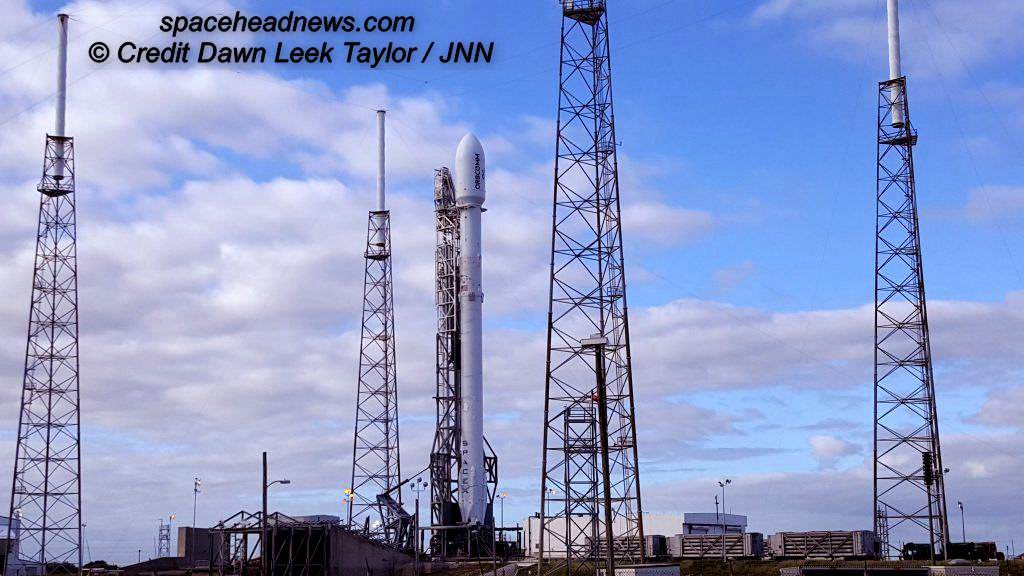
Stay tuned here for Ken’s continuing Earth and planetary science and human spaceflight news.
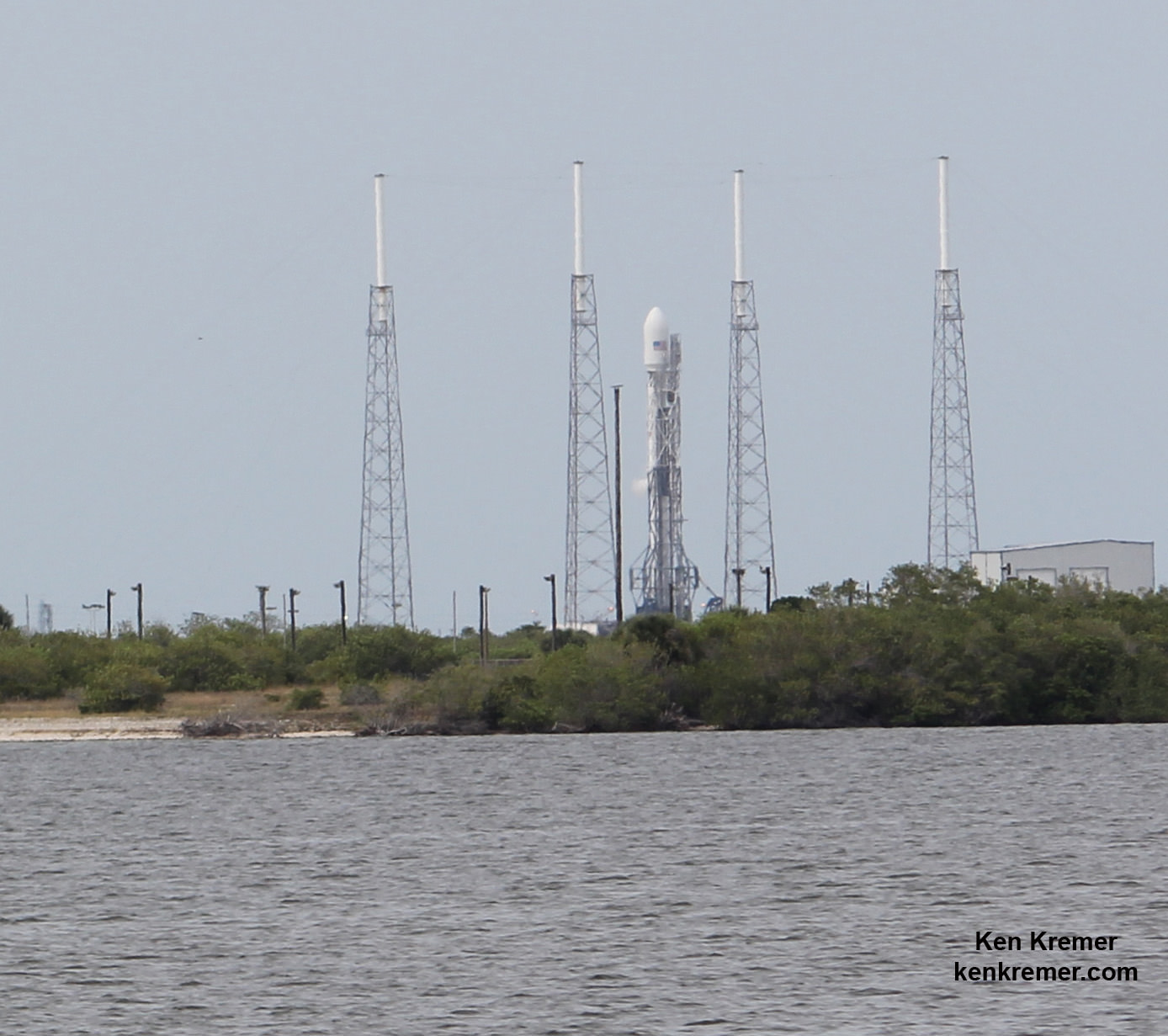
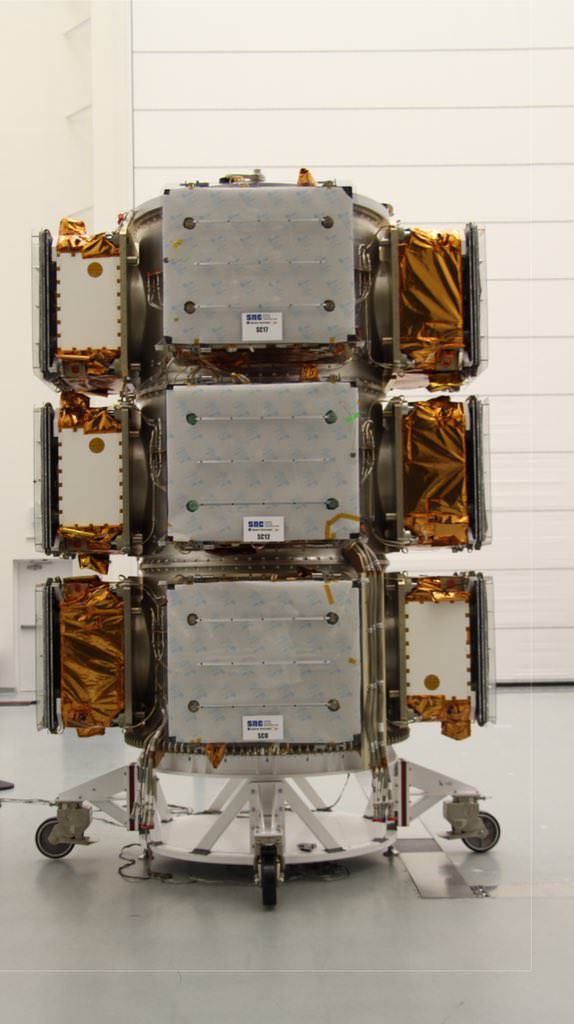


There’s a lot riding on this flight…. Go SpaceX! Going up at night, eh? THAT should make for some great landing video(s)!
Good Luck SpaceX Europe wishes you well…
I hope to see the spectacle of a successful propulsive landing of the Falcon 9 1.2 first stage. We fans are cheering for SpaceX to have a great launch and recovery!